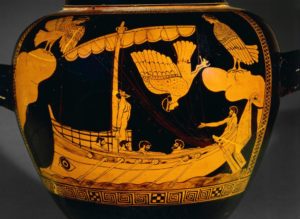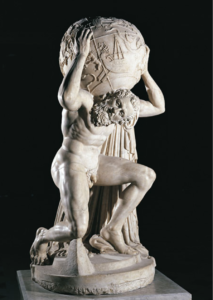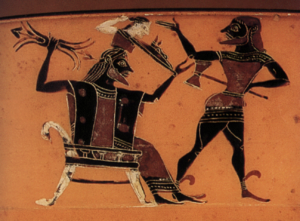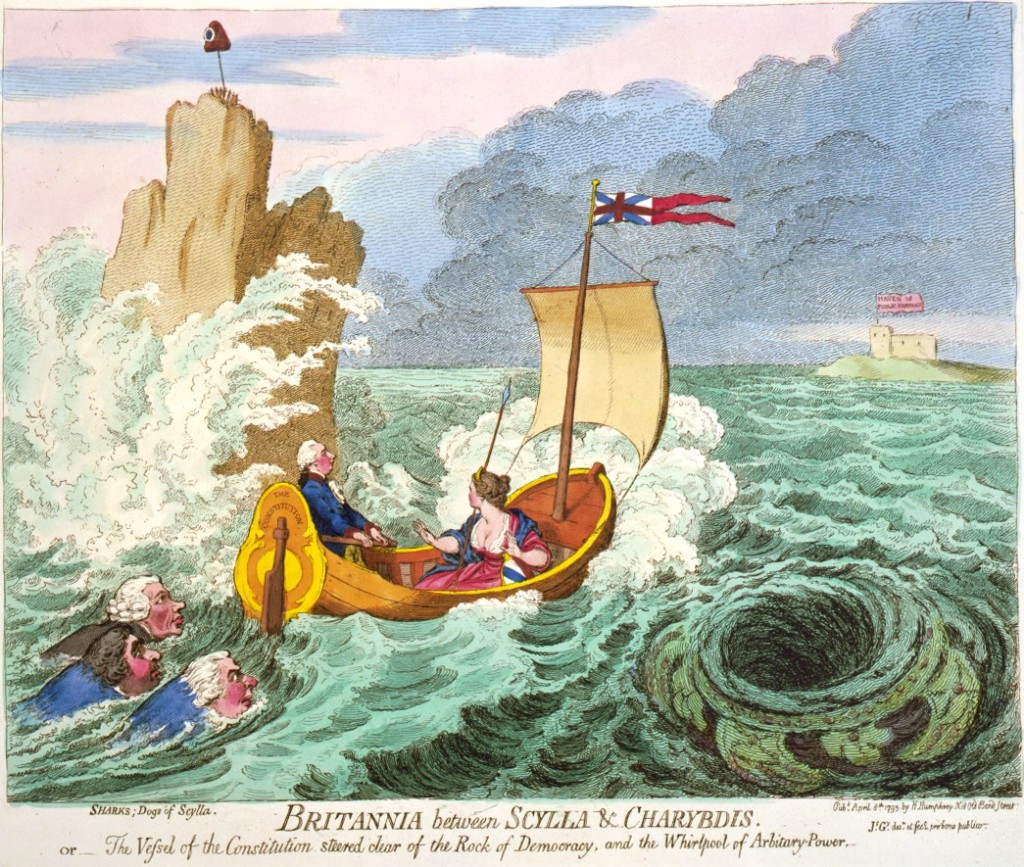
by Patrick Hunt
How often do we use idioms as part of common speech, figures of comparison that easily sum up an experience or trial by extension? That many of these seem idioms are devoid of actual context doesn’t deter us from peppering our language with them. Some are particular or unique to one language and culture, others like Classical mythological figures are found in quite a few Western languages or have corollaries because the myths themselves are foundational to many historical cultures. Most of us have heard or used some of the following: “Between a rock and a hard place”, “Herculean Labors”, “Achilles Heel”, “Pandora’s Box”, “Siren Song”, “Bearing the Weight of the World on One’s Shoulders”, or perhaps less often “Pregnant with Thought”, “Cupid’s Dart”, “Sisyphean Task”, “Stygian Darkness” and “Music to Soothe a Savage Beast (or Breast)”. Whether or not we deliberately try to evoke the myth allusion involved, all of the above reference great Classical myths, as this brief article develops.
For example, the popular idiom “Between a rock and hard place” describes a difficult situation “ often used in parallel with “on the horns of a dilemma” when the undesirable choice between two options appears equally difficult. A French parallel is often entre le marteau et l’enclume or “caught between the hammer and the anvil.” In Italian, “caught between the anvil and the hammer” is tra l’incudine e il martello Another French variant is “between the devil and the deep blue sea” or entre le diable et la mer d’un bleu profond or something similar). But these are only a few examples of one basic idea where different languages have to sum up a common experience in a colorful phrase that may be best expressed or already accessible in a convenient myth metaphor.
Between a Rock and a Hard Place
The specifics of “Between a rock and a hard place” actually describe the monsters or destruction faced by Odysseus and his shipmates when facing Scylla and Charybdis in crossing through the narrow Strait of Messina between Italy and Sicily. Scylla was the female monster in the Italian cliffs who had a girl’s upper body and dogs and snakes below, feared for plucking men out of passing ships and devouring them. Charybdis was the giant whirlpool on the opposite Sicilian coast that would catch and sink whole ships. In Odyssey XII.234-59, following the instructions of Circe, Odysseus chose to lose six men to Scylla as a lesser risk rather than losing the whole ship and crew to Charybdis. In Latin, the aphorism Incidit in scyllam cupiens vitare charybdim, “He runs on Scylla wishing to avoid Charybdis” is often credited to Virgil but his Aeneid 3.320 ff about this event does not include this line, nor do Ovid’s works. I’ve often sailed this passage in a boat coming with a stiff wind from the west around Sicily’s Cape Peloro where the Italian town of Scilla is even named directly across from the cape – turning south and southwest toward Messina and seen firsthand the danger of the Scyllan rock cliffs where the wind could drive a boat as well as many swirls of water turbulence where two seas, Tyrrhenian and Ionian, mix in this narrow strait, making oceanographic wind and current vectors the real monsters. [1]
The Labors of Hercules
Anyone facing an array of insurmountable obstacles can identify with this one, although we would not want the kind of divine obstruction that Hercules faced. Luckily for him, at least one deity was on his side. The myth sources are variable but the great hero Hercules (Herakles in Greek) was hated by Juno (Hera in Greek) partly because he was not her son but instead the offspring of her philandering husband Zeus (Roman Jove). In a rage of madness brought by Hera (Juno), Herakles either killed his wife and/or children. His punishment was a set of twelve (although sometimes limited to ten) daunting ordeals or labors mandated by Hera. Hera’s intent is indeed either to destroy the hero or bring even more hubris upon him. Any of these ordeals would likely be impossible tasks, especially without the help of Athena, patron goddess of heroes. Yet, the hero Hercules not only accomplished the tasks but in doing so rids the world of more than a few monsters and tyrants or accomplishes labors that would have destroyed anyone else.
In usual order, the Labors or Ordeals of Hercules were generally accepted as killing the Nemean Lion, killing the Lernean Hydra, capturing and obtaining the golden horns of the Keryneian Hind, destroying the Erymanthian Boar, ridding Greece of the Stymphalian Birds, cleaning the Augean Stables in a day, capturing the Cretan Bull, stealing the Mares of Diomedes (and killing the tyrant himself), getting the girdle of the Amazon Queen Hippolyta, stealing the cattle of monstrous Geryon, bringing Hera the Apples of the Hesperides and capturing Kerberos the guardian dog of Hell. Although most ancient art depictions show Kerberos with only three heads, in Hesiod’s Theogony c. 310 ff, one of the oldest Greek sources, Kerberos was said to be fifty-headed and have a voice like ringing bronze. The first tasks or ordeals of Hercules took place mostly in the Peloponnesus of southern Greece, and the next few broadened out to outer Greece, Thessaly and beyond, while the last ones extended to the limits of the world. Although many of these ordeals required immense strength and courage, the last two actually required more brains than brawn, and Athena’s help was especially vital in these final labors. The Classical tradition finally distilled all of these Herculean labors together in one source, the Bibliotheca Historica of Diodorus Siculus in mid-first century BCE.
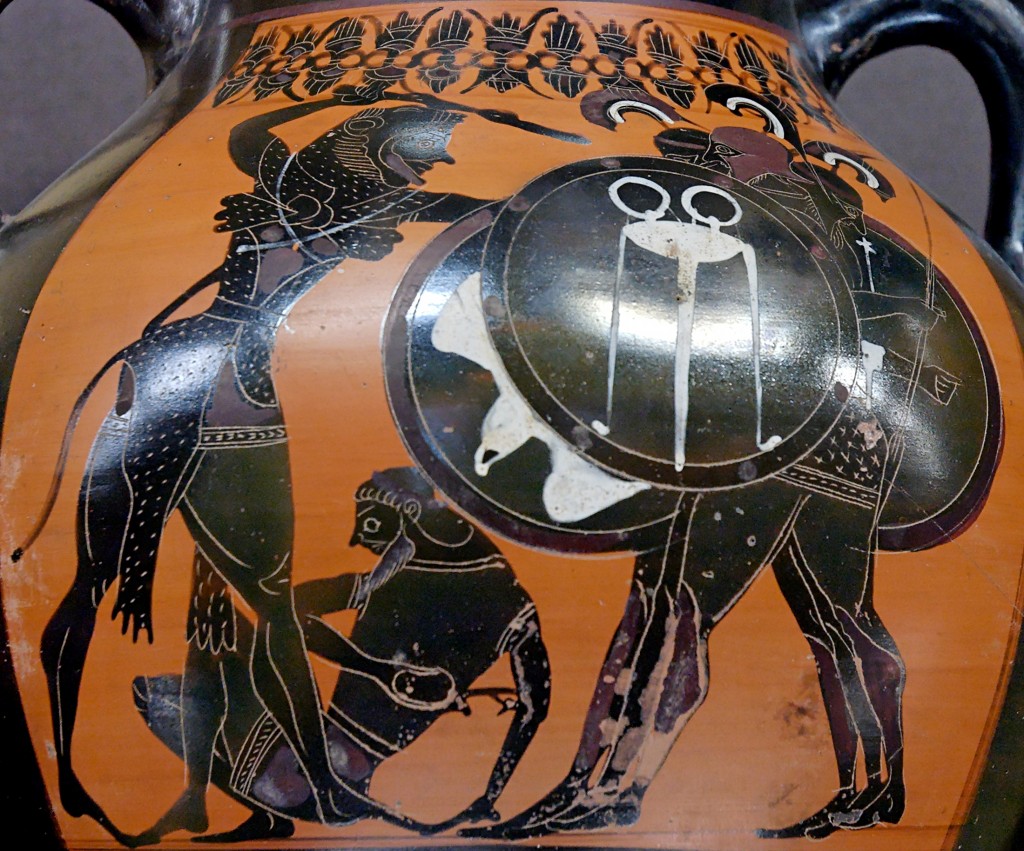
Achilles’ Heel
A weak spot different than any other, this proves to be one’s undoing. If someone searches for this kind of vulnerability, it is misplaced in the most unlikely location: the tendon of the heel. In myth Achilles was the son of Thetis, semi-divine sea nymph, and Peleus, king of the region of Mt. Pelion. Hearing an oracle speak of his future war death in Troy, his mother Thetis took baby Achilles down to the dark Styx River, which separated the upper and underworld realms, to dip him in the water and make him immortal. Holding him only by the heel so she could immerse him in the dark flowing water, his body became invulnerable except for this one spot. Achilles then later rather ignobly dies near the end of the Trojan War by a “random arrow“ in many texts – but one shot by Paris that transfixed his heel and he died. The absurdity of this mortal wound in Achilles’ heel is best explained not by the unusual fatality of such a wound – unless the arrow was poisoned as some sources claim – but rather best understood in this way: his heel became the one spot where all his mortality was collected from the rest of his body. In Ovid’s Metamorphoses XII.580-611, however, it was not a random arrow shot by Paris but the god Apollo who helps Paris by both identifying Achilles and guiding his arrow to Achilles’ one weak spot.
Pandora’s Box
This is what we all dread when we say to someone in warning, “Don’t open that, it’s a Pandora’s Box”, meaning it will produce dire results that are mostly irreversible. Hesiod (Theogony 560-612, Works and Days 63-105) 8th-7th c. BCE was a primary source of the tale of Pandora, meaning “All-Gifted” as she was the composite beautiful gift of all the gods as earth’s first woman, in some interpretations embodying sheer guile from the gods created to ensnare humanity. Prometheus had foresight as his name suggests, having stolen fire from the gods to make human lives better and Pandora was a punishment to humans for Prometheus’ theft, but his brother Epimetheus could only do what most of us do: understand things after the fact. Pandora was warned by Prometheus and others not to open the “vessel“; in Hesiod it was a pithos clay jar but apparently Erasmus translated the Greek pithos into Latin pyxis – but she did anyway in her husband Epimetheus’ absence, thereby unleashing all evil, disease, pain, death and sorrow on the world. Only hope remained at the bottom to make life tolerable. A modern equivalent is not being able to stop the concatenated outward ripples of an action in “the law of unintended consequences”.
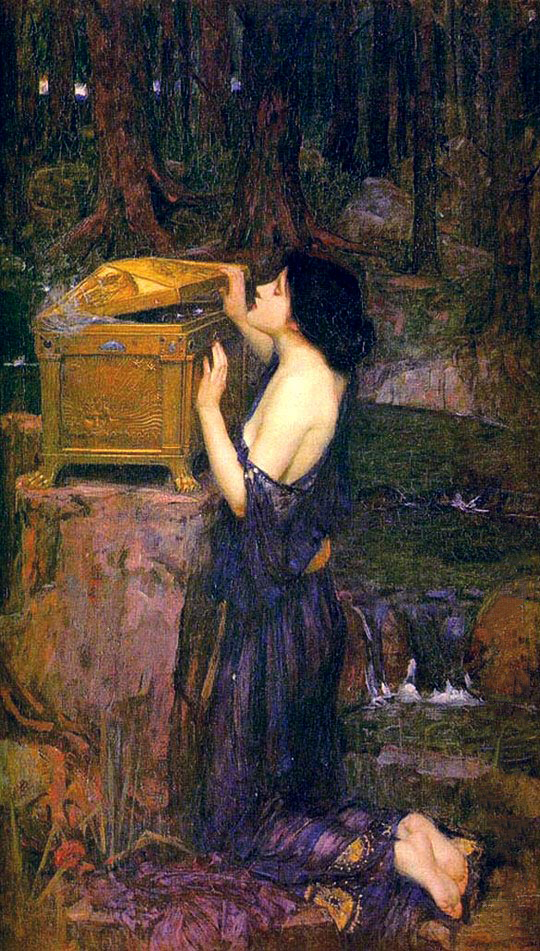
Siren Song
We are ever susceptible to the metaphorical Siren Song, seductive and mind-numbing because it acts to suspend our rational judgment. In the Homeric Odyssey XII, Circe had warned Odysseus not to listen to the Sirens because their haunting music would drive him mad. Or if he did, at least have Odysseus make certain his sailors “tie him to the mast“ to keep him from throwing himself overboard – and to also plug his rowers’ ears with beeswax so they would be impervious to the sweet high song. Odysseus insisted on hearing them as they sang (XII.178-94) and the hero related:
“For never yet has any man rowed past this isle in his black ship until he has heard the sweet voice from our lips. Nay, he has joy of it, and goes his way a wiser man. For we know all the toils that in wide Troy the Argives and Trojans endured through the will of the gods, and we know all things that come to pass upon the fruitful earth.
So they sang, sending forth their beautiful voice, and my heart was fain to listen, and I bade my comrades loose me, nodding to them with my brows; but they fell to their oars and rowed on.” (A.T. Murray tr.)
Odysseus escapes only because he cannot control his own destiny, dependent on his men and the binding ropes. In our own day, by pretending to understand enough of the past, present and future but more likely knowing ad hominem human psychology, politicians seem particularly adept at singing the modern Siren Song and we seem to always fall for it by believing their promises. The original Greek sirens were voluptuous women lying on beaches like mermaids to entrap sailors. Homer does not describe them like later Greeks as winged bird women, an image borrowed from Ancient Egypt’s ba mobilary afterlife spirit. [2] One of the most famous ancient images is from the British Museum’s Greek 5th c. red-figure stamnos vase of the Pan Painter with Odysseus tied to the mast, seen below:
Bearing the weight of the world on one’s shoulders
This is a reference to mythical Atlas, the Titan who carried the world on his shoulders. While this metaphorical task often refers to overwhelming human responsibility in modern parlance with enormous emotional cost, Atlas was after all a primordial giant himself who could actually do it, however grudgingly. In Aeneid 4:246-51, Virgil personified the towering North African mountains named after Atlas.
“Now in his [Mercury’s] flight he saw the steep flanks / and the summit of strong Atlas,/ who holds the heavens on his head, Atlas, / whose pine-covered crown is always wreathed / in dark clouds and lashed by the wind and rain:/ fallen snow clothes his shoulders: while rivers fall / from his ancient chin, and his rough beard bristles with ice.” (A.S. Kline, tr.)
One of the most impressive ancient sculptures of Atlas is the Farnese Atlas in the Archaeological Museum of Naples, a Roman copy of a Greek original commanding attention in its size – over 2 m – with great detail, now named after its Renaissance Farnese collectors. Although it is actually a night star map depicted on Atlas’ globe and said by some to represent the lost star catalog of the Greek astronomer Hipparchus (ca. 130 BCE) [3], it is an apropos myth subject as bearded Atlas is bent under the heavy weight of the sphere.
Farnese Atlas, National Archaeological Museum, Naples
Pregnant with Thought
Anyone giving birth to great intellectual achievement with high creativity can be said to be in this state of “pregnant with thought”. A parallel idea is a “brainchild” although sources suggest different myth variants, one ancient Greek myth refers to Zeus about to give birth to Athena, goddess of wisdom and war. After he had impregnated Metis, goddess of thought, he feared an oracle that said her children would be more powerful than their father. In order to outwit any possible usurper of his Olympian throne, Zeus swallowed the pregnant Metis and nine months later gave birth to an adult goddess Athena from his forehead, fully armed, as one of the oldest Greek vases depicts:
Birth of Athena, attrib. to the Phrynos Painter, mid-6th c. BCE, British Museum.
A great Classical sculpture, a Roman copy of a Greek original – depicts Zeus with a huge swelling of his brow before giving birth to Athena from his forehead. This majestic bearded Zeus sculpture may have been a small copy of the ivory and gold colossal statue of Zeus at Olympia, one of the Seven Wonders of the Ancient World ostensibly originally modeled by Phidias after the handsome 5th c. BCE tragedian and general Sophocles because he was considered to possess sufficient arete. In every creative venture where Athena inspired mental prowess the ancient myth is symbolically replicated, even a human mind can likewise be filled with thought and bring the “brainchild” to birth.
Cupid’s Dart
Trying to explain how we humans fall so swiftly in love or at least are felled by lust for someone else, many have opined for millennia that such external forces both suddenly strike and render us powerless. Modern research validates that not only could pheromones be involved under the radar, but that additional physiological responses are triggered by all sorts of internal chemistry, including endocrinal and hormonal stimulation in dopamine, adrenaline, endorphins, vasopressin, oxytocin and norepinephrin. [4]
The best ancient Greek answer to the mystery of falling in love was that the arrow of Eros the god of love struck, or Cupid’s arrow in the Roman version. Cupid’s dart may well be valid in the presence of pheromones and other physico-chemical signals. What is often lost in the story is that Eros/Cupid had two arrow capabilities: while the golden-tipped arrow brought love and attraction, the lead-tipped arrow brought the opposite hate and repulsion. Apuleius related some of this dichotomy in his famous second century CE tale of Cupid and Psyche in his The Golden Ass (or Metamorphosis). The anonymous Homeric Hymn to Aphrodite also sang that love knew no boundaries, that the goddess and her son struck all living creatures at times with overwhelming irrational desire.
Sisyphean Task
A Sisyphean task is an endless one, a frustrating work that never ends. In Greek mythology Sisyphus was a legendary king of Corinth whose hubris – pride in his cleverness, endless trickery against gods and humans, seduction of his niece Tyro and breaking the honored law of philoxenia (hospitality to strangers) by killing guests – brought about his punishment in Tartarus of the lowest underworld. His eternal task was having to roll a rock to the top of a mountain only to have it roll back down the other side. Thus he had to start over again and again, forever continuing a task that was never completed. This is the stuff of nightmares because such a hellish task was one of the most dire punishments a mortal could face. Fortunately, his myth descendants were not so cursed, since his grandson Bellerophon was the hero who killed the Chimaera monster while riding the winged horse Pegasus with Athena’s help.
Stygian Darkness
In Greek mythology, the River Styx was a boundary between the upper world of the living and the underworld of the dead. It was so inky black that anything under its surface disappeared from sight. As mentioned above, its water conferred invulnerability, sought by Thetis for her son Achilles whose flesh was protected except for his heel where she held him above the black water. The gods swore unbreakable oaths by the Styx and were eternally bound by them. One meaning of the word Styx was “detestation” partly because for the dead crossing the Styx was a sign of hopelessness. In his Inferno 8 with Hell’s Fifth Circle, Dante somewhat alters the ancient Classical character of the Styx, attributing some of the qualities of the River Acheron to it, including adding the boatman Charon to the Styx instead of the Acheron and its position dividing upper world and underworld, as he places the Styx deeper.[5]
Music to soothe a savage breast (or beast)
Music has enormous power to both emotionally move or physically arrest, and it is not only humans so affected. How music acts at the deeper level of the brain is still very much a mystery, but there is considerable consensus about music’s power, as F. D. Martin stated in The Journal of Aesthetics and Art Criticism 25.3: “There is little doubt about the peculiar power of music to evoke an intensity of experience that few other arts rival.” [6]
The core of the original above idiom alludes to the Greek myth of Orpheus, the Thracian musician loved by Apollo, god of music, with many myths attesting the music of Orpheus being capable of calming animals. Roman mosaics also find this a common motif, with Orpheus sitting playing his lyre (kithara) surrounded by a peacefully incongruous crowd of animals normally hunting or fleeing from each other. One of my favorite mosaics is at the Archaeological Museum in Palermo, Sicily, also seen similarly in the Hatay Museum, Antakya, Turkey (below). Ovid’s Metamorphoses 11.1-4 notes:
“While with his songs, Orpheus, the bard of Thrace,/ allured the trees, the savage animals,/ and even the insensate rocks, to follow him.”(B. More, tr.)
Although Orpheus was inspired by Apollo and not Dionysus – known for brazen and pounding rhythm -, this moving rock motif may have inspired the rock band’s and magazine’s name: Rolling Stone[s].
As it is directly written, this idiom is a line from an English Poet, William Congreve, 1697 (here is the excerpt):
The Mourning Bride
“Musick has Charms to sooth a savage Breast/,¨To soften Rocks, or bend a knotted Oak. / I’ve read, that things inanimate have mov’d,/ And, as with living Souls, have been inform’d,/ By Magick Numbers and persuasive Sound./ What then am I? Am I more senseless grown /Than Trees, or Flint? O force of constant Woe! / ‘Tis not in Harmony to calm my Griefs.”
Congreve either consciously or unconsciously referenced the Orpheus myth, as seen in the multiple parallels to the Ovid quote with animals, trees and even rocks mentioned in both the original Metamorphoses and the 17th c. derived poem.
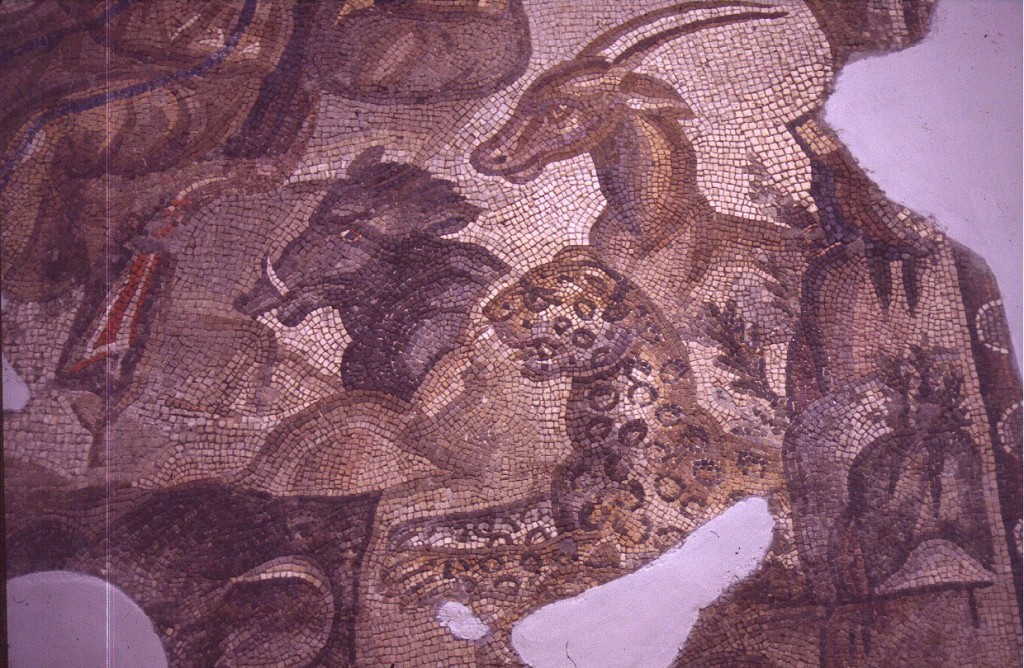
Conclusion
Seen in the above idioms that color our speech, when a longstanding myth metaphor already satisfies the demand for a strong expression, regardless whether or not the myth reference is universally known, the idiom chosen may reflect a millennia-old habit of describing just such a human experience.
Notes
[1] Patrick Hunt. “Classical Monsters as Oceanographic Phenomena”, California Classical Association (N. S.) Spring Meeting on Seafaring and Maritime Trade in the Mediterranean, Asilomar – Pacific Grove, California, April 27, 1985.
[2] John D. Cooney. “Siren and Ba, Birds of a Feather”. The Bulletin of the Cleveland Museum of Art 55.8 (1968) 262-271.
[3] Georg Thiele Antike Himmelsbilder. Berlin: Weidmann, 1898; Bradley E. Schaefer, “The epoch of the constellations on the Farnese Hercules and their origins in Hipparchus’s lost catalogue”, American Astronomical Society Meeting, San Diego, 2005; but note criticism of Schaefer by Dennis Duke, “Analysis of the Farnese Globe”Journal for the History of Astronomy 37 (2006) 87-100.
[4] “Cupid’s Arrow May Cause More Than Just Sparks To Fly This Valentine’s Day”, Science Daily Feb. 14, 2009
[5] Patrick Hunt. “On the Inferno” and “Dante’s Monsters in the Inferno: Reimagining Classical to Christian Judgment” in Critical Insights: The Inferno of Dante, Patrick Hunt, ed. Hackensack NJ: Salem Press, 2011, 3-19 & 245-65.
[6] F. D. Martin. “The Power of Music and Whitehead’s Theory of Perception.” The Journal of Aesthetics and Art Criticism 25.3 (Spring, 1967) 313-322.
